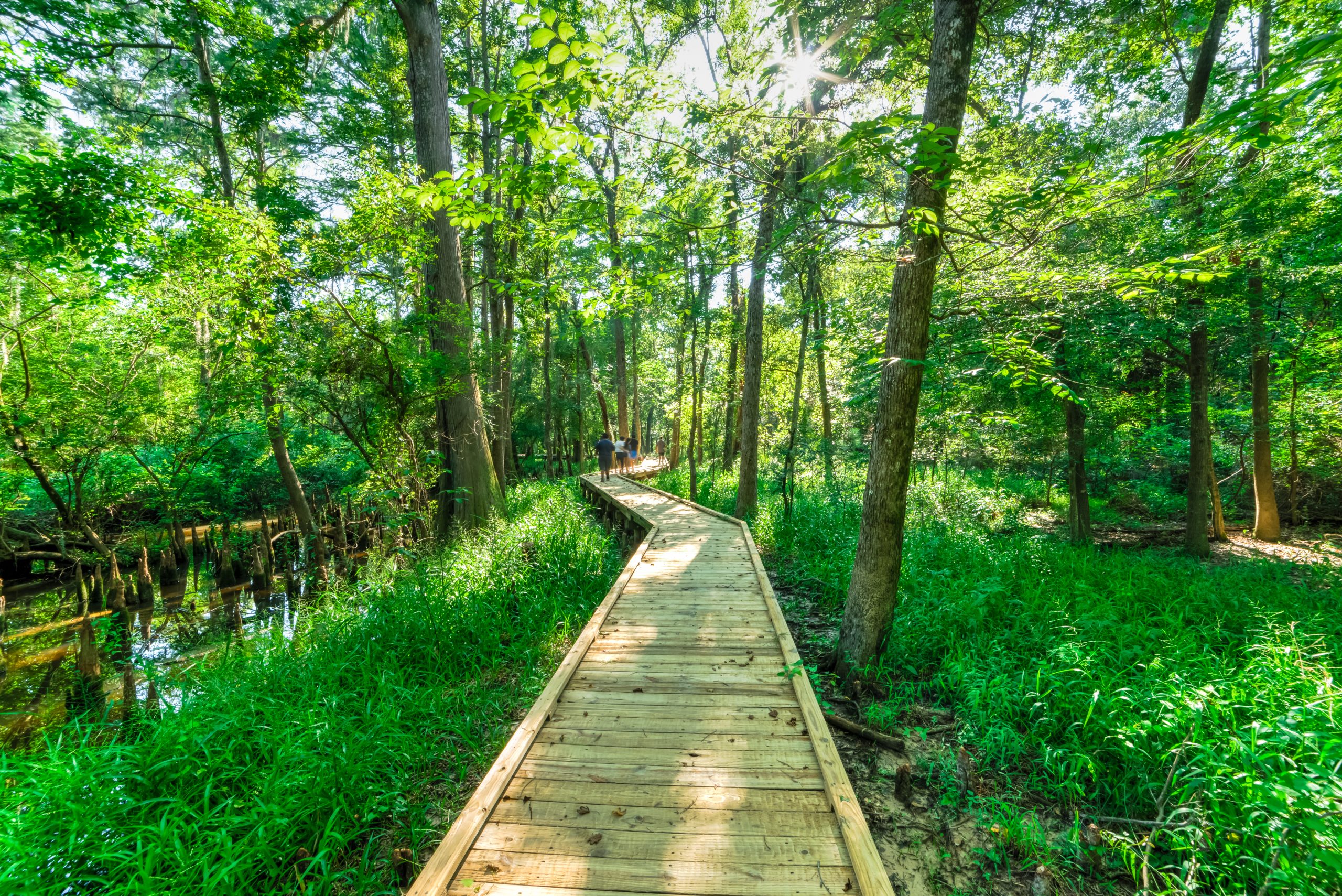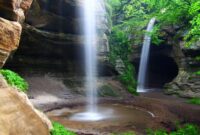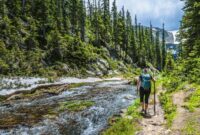Nature walks near me offer a refreshing escape, connecting us with the natural world without requiring extensive travel. This exploration delves into discovering, planning, and experiencing nearby trails, catering to various fitness levels and preferences. Whether you’re seeking a leisurely stroll or a challenging hike, we’ll guide you through finding the perfect nature walk tailored to your needs and interests, highlighting the benefits for both physical and mental well-being.
We’ll cover everything from identifying suitable trails based on difficulty and duration to essential safety precautions and packing lists. We’ll also discuss enhancing your experience through mindful observation and engagement with the sensory details of the natural environment, ensuring your next nature walk is both enjoyable and enriching.
Planning a Nature Walk
Planning a successful nature walk involves careful consideration of several factors to ensure a safe and enjoyable experience. This includes creating a detailed itinerary, packing appropriate supplies, and understanding potential risks. Proper preparation is key to maximizing the benefits and minimizing any potential hazards.
Sample Nature Walk Itinerary
A well-structured itinerary enhances the enjoyment and efficiency of your nature walk. The following is a sample itinerary for a 3-hour walk, adaptable to different locations and durations. Remember to adjust timings based on your chosen location’s terrain and your personal pace.
Time | Activity | Location/Notes
9:00 AM – 9:15 AM | Arrival & Preparation | Parking area, check equipment, apply sunscreen.
9:15 AM – 10:15 AM | Gentle incline walk | Observe local flora and fauna, taking photos as desired. Listen for bird calls. Potential stop for a short rest at a scenic overlook.
10:15 AM – 10:45 AM | Water break and snack | Find a suitable spot to rest, hydrate, and enjoy a packed snack. Take in the surrounding views.
10:45 AM – 11:45 AM | Moderate incline walk | Continue on the trail, focusing on observation of the environment. Look for signs of wildlife. Consider collecting natural specimens for later identification (if permitted).
11:45 AM – 12:00 PM | Return journey | Begin the return walk, taking a slightly different route if possible to enhance the experience.
12:00 PM | Departure | Return to the parking area, clean up any trash.
Safety Precautions and Preparedness
Safety is paramount during any nature walk. Unforeseen circumstances can arise, so preparedness is essential. This includes having appropriate gear and knowledge of emergency procedures. Failure to plan for potential hazards can lead to discomfort, injury, or worse. For example, a sudden thunderstorm can quickly turn a pleasant walk into a dangerous situation without adequate preparation.
Packing Checklist for a Nature Walk
Prior to embarking on your nature walk, carefully check your pack to ensure you have all necessary items. This checklist includes essentials for safety, comfort, and enjoyment.
- Water (at least 1 liter per person)
- Snacks (energy bars, trail mix, fruit)
- First-aid kit (bandages, antiseptic wipes, pain relievers)
- Map and compass/GPS device
- Sunscreen and insect repellent
- Hat and sunglasses
- Appropriate clothing (layers for changing weather conditions)
- Sturdy footwear
- Whistle (for signaling in case of emergency)
- Fully charged mobile phone (consider a portable charger)
- Rain gear (poncho or waterproof jacket)
Illustrating Nature Walks
Nature walks offer a rich tapestry of sensory experiences, allowing us to connect with the natural world in profound ways. By carefully observing and documenting these experiences, we can better appreciate the beauty and complexity of our surroundings and share these moments with others. The following examples illustrate the diverse ways a nature walk can be depicted.
A Picturesque Scene
Sunlight, fractured by the leaves of ancient oak trees, dappled the forest floor in shifting patterns of light and shadow. A carpet of emerald moss, soft and yielding underfoot, cushioned each step. Towering redwoods, their bark the color of burnished copper, reached towards a sky of brilliant azure. A small stream, its water crystal clear and reflecting the surrounding trees, chuckled softly as it meandered through the undergrowth. Wildflowers, a vibrant mix of blues, yellows, and purples, punctuated the green landscape, their delicate petals unfurling in the warmth of the sun. A lone deer, its coat the color of autumn leaves, grazed peacefully in a sunlit clearing, its ears twitching occasionally as it listened to the sounds of the forest. The air was crisp and clean, carrying the subtle scent of pine needles and damp earth.
Sounds and Smells of the Environment
The morning air vibrated with the chorus of birdsong. A robin’s cheerful melody intertwined with the chirping of crickets and the distant call of a blue jay. The rustling of leaves, stirred by a gentle breeze, created a soothing susurrus. The rhythmic splash of water over smooth river stones provided a constant, calming background hum. The air was thick with the earthy scent of decaying leaves and damp soil, mingling with the sweet fragrance of honeysuckle blossoms clinging to nearby bushes. A faint, musky odor hinted at the presence of wildlife nearby. The overall sensory experience was one of vibrant life and tranquil peace.
Impact of Weather Conditions
Different weather conditions dramatically alter the experience of a nature walk.
Sunny and Warm Weather
On a bright, sunny day, the landscape is bathed in golden light, revealing vibrant colors and intricate details often missed in duller conditions. The warmth of the sun encourages wildlife activity, and the air is filled with the buzzing of insects and the songs of birds. However, direct sunlight can also make the walk more strenuous, requiring extra hydration and sun protection.
Rainy Weather
A rainy day transforms the landscape into a mystical realm. The forest floor becomes a glistening tapestry of water droplets, and the air is cleansed and fresh, carrying the earthy scent of petrichor. The sound of rain falling on leaves creates a mesmerizing rhythm, and the world seems quieter, more contemplative. However, muddy trails and slippery surfaces can pose challenges, requiring appropriate footwear and caution.
Cold and Windy Weather
A cold, windy day presents a different set of challenges and rewards. The wind whips through the trees, creating a dramatic soundscape. The landscape takes on a stark, almost desolate beauty, with bare branches silhouetted against a gray sky. The cold air invigorates, but it’s crucial to dress warmly and be prepared for sudden changes in temperature. Wildlife may be less visible, but the quiet solitude can be profoundly peaceful.
Epilogue
Embarking on nature walks near you offers a wealth of benefits, from improving physical health and reducing stress to fostering a deeper appreciation for the natural world. By following the guidelines outlined here—from careful planning and preparation to mindful engagement with your surroundings—you can transform your local walks into enriching and memorable experiences. Remember to always prioritize safety and respect the environment, leaving each trail better than you found it.




